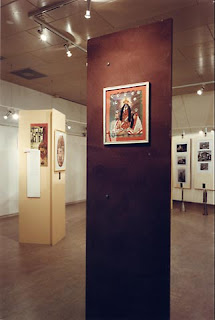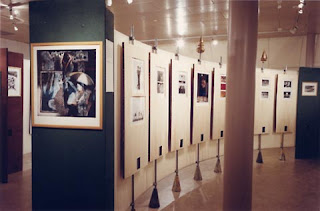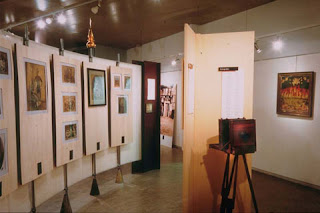An exhibition of the work of Indian photographers which clearly shows that their photographic manner of seeing is different to that of the Western world. An exhibition of Indian photography organized by
Because of historical, geographical and religious influences the traditional way of visualizing in India is obvious different.
At the same time this exhibition will do justice to the high level which has been attained by contemporary Indian photography, a fact which not only in Europe, but also in India is hardly known.
This unique exhibition has been made by a very select combination of collections and archives of important vintage and modern Indian photography and a contribution of many contemporary photographers.
Most of the photographs have never been shown before. Also, by means of videos and a publication, emphasis has been given on other sources of visualization like new Indian cinema, classical dance, religion and modern painting.
The exhibition started in the gallery of the Museum voor Volkenkunde in Rotterdam, and has been on show in Antwerp, Leuven (Belgium), The Hague and Danmarks Fotomuseum.
'The Other Way of Seeing', exhibition on the Indian way of visualizing in photography.
“Indian photographers, (not Europeans in India) picked up the camera and adapted its use -bent its will- to their conception of life.““Usually filled with several pockets of interest across a flattened picture field, a painting’s rhythm does not necessarily lead to a single dominating subject as in a Western visual representation. Everything in the picture field happens at once and in a idealized space over a timeless eternity.”
“Until now, we have been so culturally rootbound that we have generally considered European or Western images as the ‘standard’ for all photographic imagery.”
Judith Mara Gutman: “Through Indian Eyes”
“It has become evident in Indian photography that it is possible to embrace the expressiveness of one’s own culture and at the same time acknowledge the socio-cultural ideas brought in from the West. The adaptation of this medium from a purely Western to an Indian sensibility has resulted in shaping unusual expressions and has allowed for unique statements.“
Vasant NAYAK
“India, seen through Indian eyes appears to be quite different to what we see with our prejudice and imagination. Here a camera is not a weapon as is often in our case, but much more an aid in developing a different point of view.”
“The culture dialogue starts with hearing and seeing, understanding and communication and not with overtaking and development. Photographs can be an aid on the way to encountering discovery.”
Al Imfeld: “The Endless Wheel”
“These photographs capture facets of Indian life that are rarely perceived, they portray the quintessential India hidden behind tumultuous impressions that are familiar and yet unknown”.
Sarya Doshi in 'Pratibimba'
“The challenge is in the Indianness of the situation which expresses faith, belief and represents culture, tradition through tangible forms, symbols, colors and intangible ‘vibrations’.”
Rajesh VORA
Colofon
1.venue: Museum voor Volkenkunde, Rotterdam (the Netherlands) NCO (Nationale Commissie voorlichting en bewustwording Ontwikkelingssamenwerking) main sponsorAmsterdam (The Netherlands)
The Neth.-India Association co-organisation
Berkel en Rodenrijs (The Netherlands)
Eric van Casteren graphic designer / exhibition designer
Den Haag (The Netherlands)
Intercolor bv professional laboratory
Eindhoven (The Netherlands)
Kodak Nederland bv co-sponsor
Odijk (The Netherlands)
Museum voor Volkenkunde (first exhibition location)
Rotterdam (The Netherlands)
NCPA-CPA archives co-ordinator photography in India
Bombay (India)
TATA Industries ltd. sponsor
Yeshwant Chaudhary design consultant
Kumar Sangram Singh collection old photography
Jaipur (India)
Tim Besserer collection 'The Endless Wheel'
Rheinheim (Germany)
Vasant Nayak photography & consultant
Foxridge (U.S.A.)
Robert Schilder idea and realisation (The Netherlands)
2.venue: Exhibition in Galerie 24, Leeuwenstraat in Antwerp.
This gallery was an initiative of Circle-24, a worldwide foundation of professionals who kept each other involved about trends and developments. 3. venue: University of Louvain (Belgium)
4. Museum for Photography (Denmark)
5. Museum for Photography Stockholm (Sweden)







